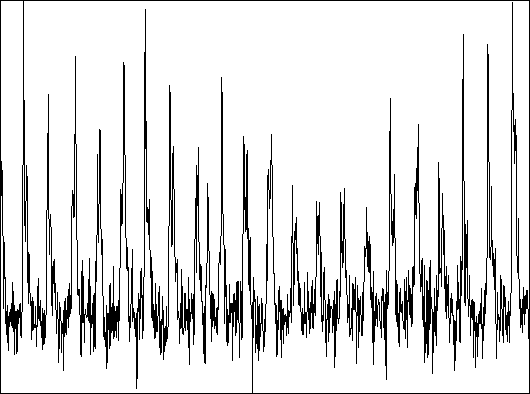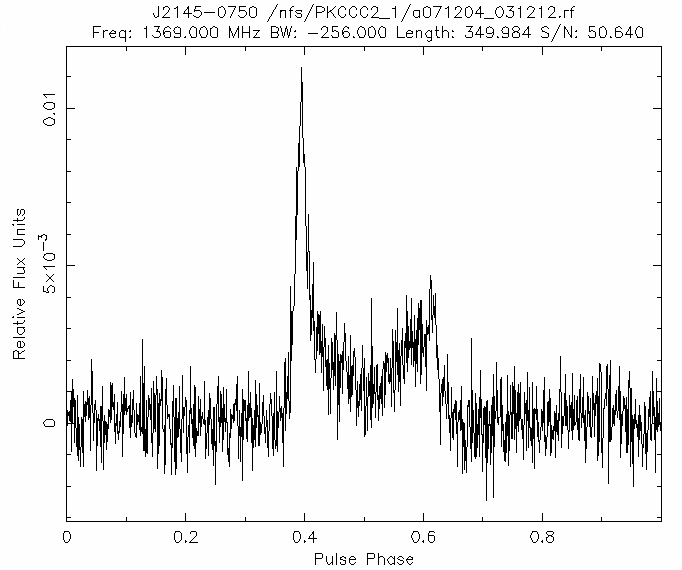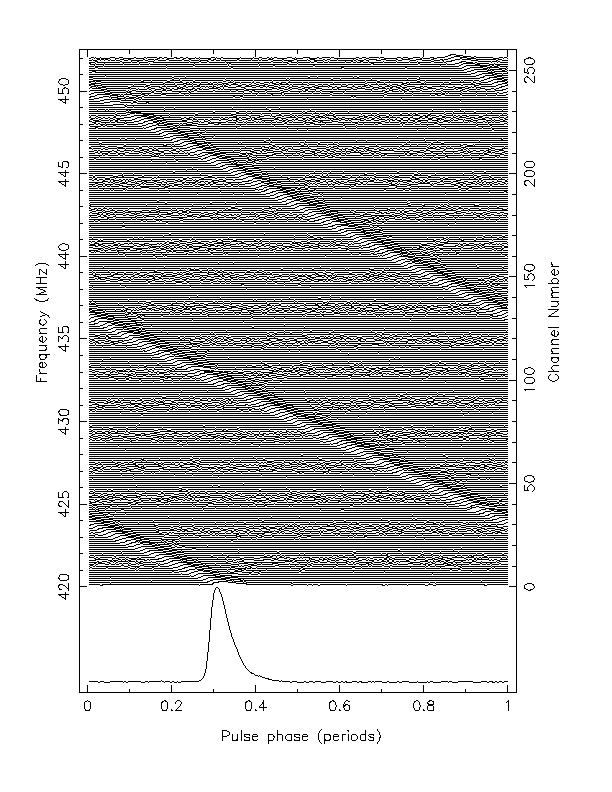Basic Observational Properties of Pulsars
Pulses
All pulsars are identified by their characteristic emission of noise in the form of a periodic sequence of pulses. Whilst the intensities of the pulses may vary widely, the basic timing of the pulses is periodic and extremely consistant, to the point that they can be used as clocks. Pulse profiles are often very complex with several identifiable components. Furthermore, observations show that each pulsar's pulse profile is unique. The most common general shape for a pulse profile is the single Gaussian peak component.

Sub-Pulses
Many of the pulses are often found to exhibit subpulses, which appear to be basic Gaussian shapes. They are generally much narrower than the overall pulse profile.

Periods
The pulsating radio signals of pulsars have an average period of around a second. Pulsar periods can be as low as a few milliseconds and as long as a few seconds. All the observed periods seem to be getting longer, as the pulsar slowly looses its rotational energy.
Dispersion Measure
As radio waves travel through the interstellar medium, they encounter ionised gas with a refractive index different to that of empty space. This ionised gas has the effect of putting a delay in the arrival time of the radio pulse, depending on the frequency of the radiation. The higher frequencies end up traveling faster through the interstellar medium, so we see pulses in the highest frequency arriving first. Each lower frequency channel exhibits a pulse that arrives slightly after the one before it, all the way down to the lowest frequency. The Dispersion Measure is a quantitative measure of this effect and is roughly proportional to the density of electrons along the line of sight.

